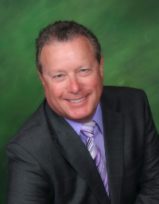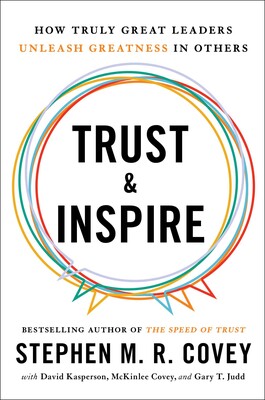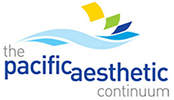
Gary Vaughn, CDT, CTO
In today’s climate of difficulty hiring, training, and retaining employees and particularly since the trend of working from home has increased dramatically, even more especially since the pandemic, I think it might be wise to take a step or two back and look at our present condition. Although I normally tend to discuss dental topics, laboratory techniques, or share cases, I feel compelled to share some thoughts or albeit philosophies that I have recently become acquainted with through my readings and observation of recent trends experienced in the business world.
I reference various quotes and content from a book I have been reading, which has truly caused me to stop and think. The book is entitled, Trust and Inspire by Stephen M. R. Covey. Many of you have surely read the works of his father, the late Stephen R. Covey, an incredible, author, educator, and mentor, who tragically died as a result of a biking accident ten years ago this past month. I can truly say that the “apple certainly didn’t fall very far from the tree.”
Since the dawning of the Industrial Revolution, the so-called leadership style of “Command and Control” has dominated the work environment and by in large has continued right on down to our present-day workplace. Certainly, innovations have brought unparalleled change to the way things are done in the workplace, but the leadership style has not followed suit. With little or sometimes even no change, the business world has continued for several centuries to hand down the same pattern of governance. In more recent times, there have sprung forth more “enlightened” versions of “Command and Control” however for all their progress, most have effectively just moved up the continuum to a “kinder, gentler”  enlightened command and control.1
enlightened command and control.1
Peter Drucker, the Austrian-American educator and management consultant, whose writings contributed to the philosophical and practical foundation of Modern Business Corporation said, “In a few hundred years, when history of our time is written from a long-term perspective, it is likely that the most important event these historians will see is not technology, not internet, not e-commerce. It is an unprecedented change in the human condition. For the first time—literally—substantial and rapidly growing numbers of people have choices. For the first time, they will have to manage themselves. And society is totally unprepared for it.”2
How many of us believe that in the workforce at large, our organizations possess far more talent, creativity, ingenuity, intelligence, and ability than their present jobs require or even allow them to contribute? Beyond that, how many of you believe that the vast majority of the workforce in your organization is under immense and growing pressure to produce substantially more for less?3
Not exactly the same thing, but nearly just as frustrating, is the big challenge we have faced in the laboratory for several years now, of an increased amount of work and the inability to find qualified help to produce an increased workload or for that matter even find people who want to work, period!
I am certain that nearly all of you have faced similar problems as a result of the pandemic. So, let that sink in for a moment…
Mahatma Gandhi said, “The difference between what we are doing and what we are capable of doing would solve most of the world’s problems.”
If we intend to bridge these gaps, we can’t continue to “manage” people in the same way we have in the past. It is time to change so our leadership can catch up to how we’ve changed. In a world characterized by profound disruption. We can’t continue to rely on a management style that has become dated and ineffective. Where the workforce is more diverse than ever before, and multiple generations have radically different expectations, we need a new way of leading.4
Five Emerging Forces
- The nature of the world has changed
- The nature of work has changed
- The nature of the workplace has changed
- The nature of the workforce has changed
- The nature of choice has changed
These five emerging forces are at work in our world. Regardless of whether we see them or are even aware of them. In order to thrive, let alone survive in this whirlwind of change we organizationally and as leaders need to adapt as fast as things are changing around us.5
A growing number of companies worldwide have started to move on these concepts. For example, once Microsoft began to fade from its former imposing image, Satya Nadella replaced Steve Ballmer as CEO in 2014. “Innovation was being replaced by bureaucracy. Teamwork was being replaced by internal politics. We were falling behind.” Changing Microsoft’s culture was Nadella’s number one goal as CEO. Why? Because as a Trust and Inspire leader, he understood the first epic imperative of our time: to succeed, you must win in the workplace by attracting, retaining, engaging, and inspiring the best people. His motto was “Our industry respects innovation, not tradition.”6
Several other CEOs have rescripted their previous form of leadership. Andy Pearson as the CEO of PepsiCo was considered the epitome of a demanding Command and Control CEO. When he left, he taught at the Harvard Business School for almost a decade but was lured out of retirement to become chairman of YUM. David Novak had been leading YUM. When Pearson came on board, he completely rescripted himself and embraced Novak’s Trust and Inspire leadership style. To quote the new and improved Andy Pearson, “You say to yourself, If I could only unleash the power of everybody in the organization, instead of just a few people, what would we accomplish? We’d be a much better company.7
I strongly recommend reading, Trust and Inspire. CEO of INTUIT, said, “You are capable of reinventing yourself, as a company or as a leader, while preserving the core of what you are.”8
This article only scratches the surface of these concepts and this philosophy but I hope it has engendered interest in how to confront and embrace the changes we must all consider to remain relevant to the businesses in our ever-changing world.
If you would like to send a case, please contact the Pacific Aesthetic Laboratory Group at www.pacificaestheticdentalstudio.com, Gary Vaughn, CDT, CTO (916) 786-6740, or via email [email protected].
References
1. Trust and Inspire, page 72
2. Trust and Inspire, page 15
3. Trust and Inspire, page 16
4. Trust and Inspire, page 16
5. Trust and Inspire, page 20-22
6. Trust and Inspire, page 25
7. Trust and Inspire, page 263
8. Trust and Inspire, page 264
